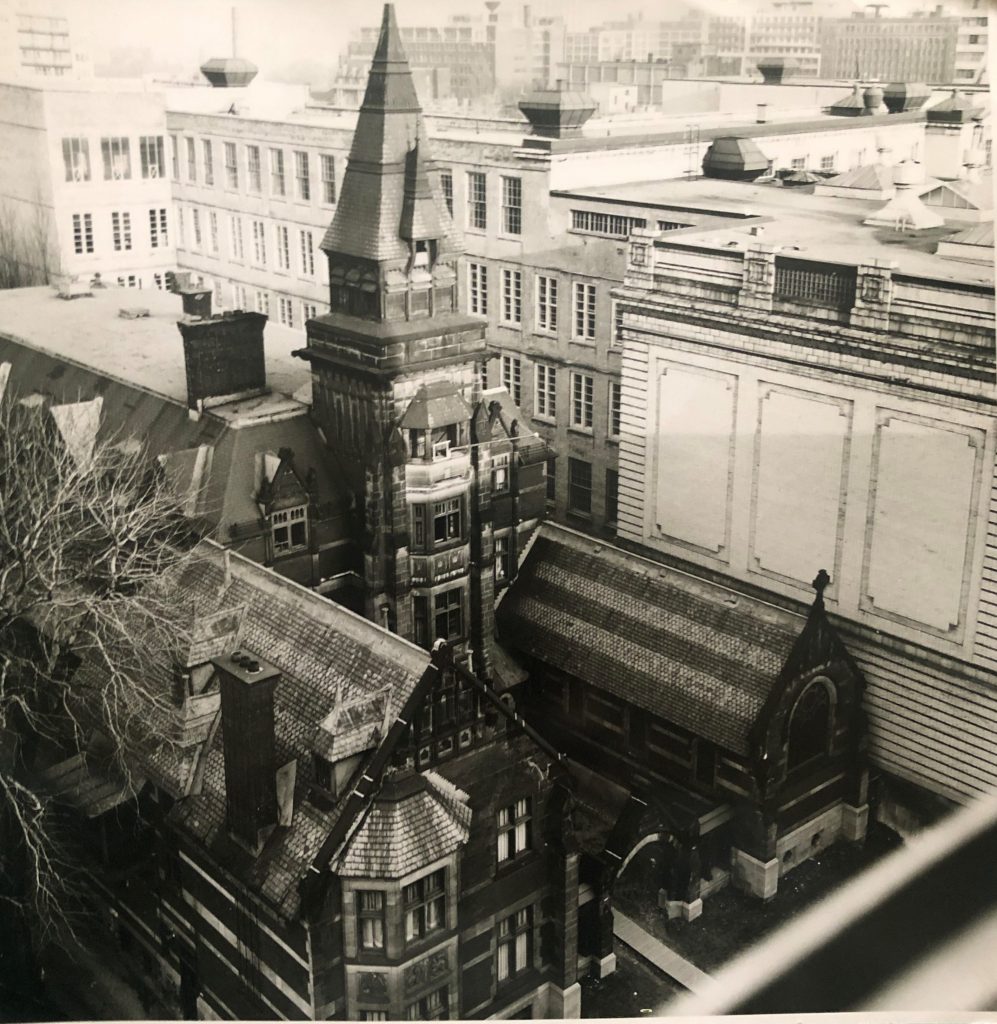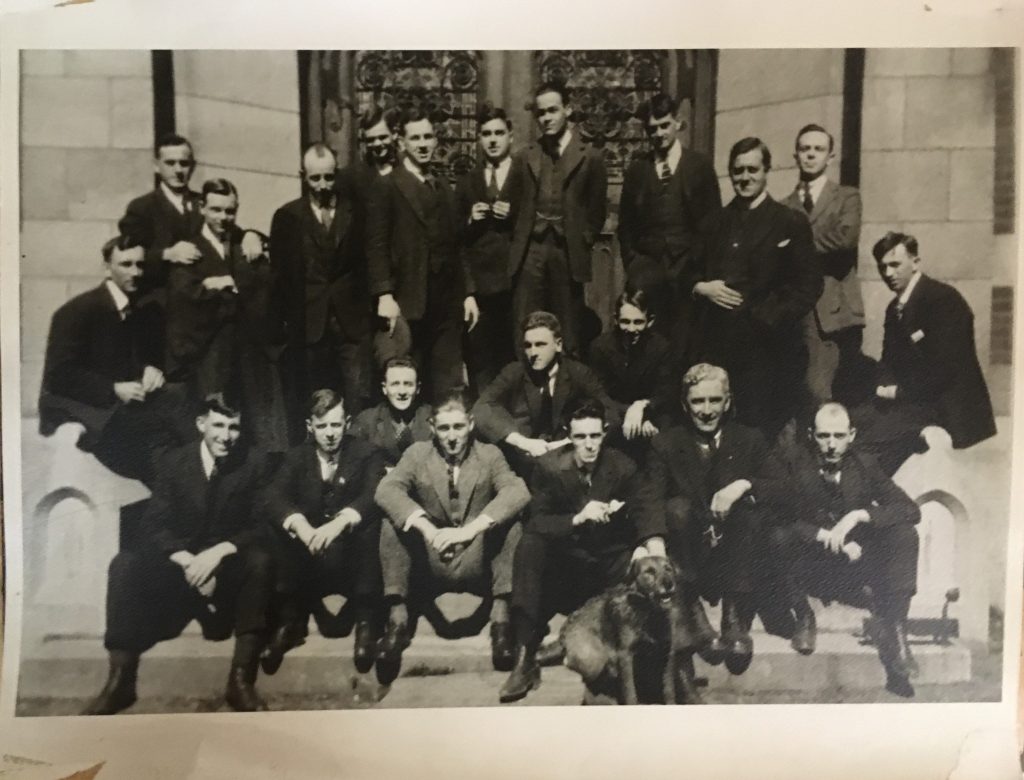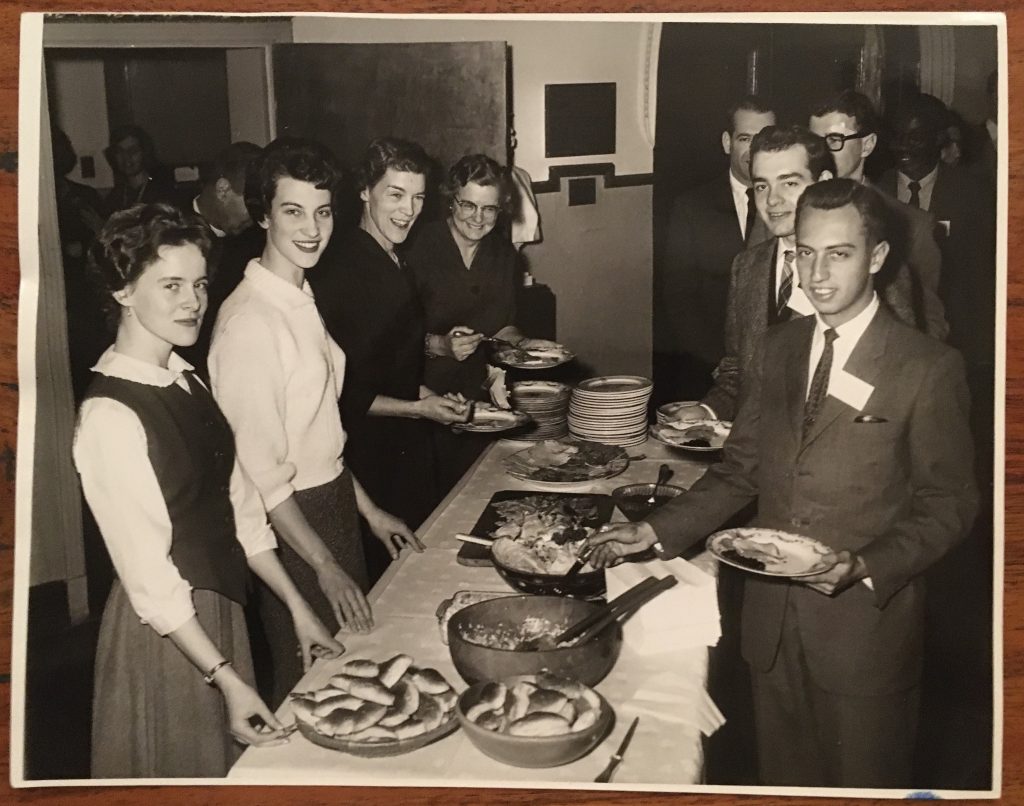This fall, with the college unusually quiet and empty as a result of the pandemic, we saw the opportunity to undertake a messy and space-intensive project: cataloguing and safely storing photographs that have been stashed in the attic since the sale of the building to McGill 12 years ago.
As the project nears completion, we have a new window on Dio’s history. We are also reminded that, although they didn’t enjoy the vast exposure offered by Instagram and other social media, photographs of decades past were taken and displayed with posterity in mind.
The Dio collection includes more than 100 photos dating back to the early 1890s. Many, particularly in the early decades, were taken by well-known Montreal photographers – most notably Notman & Son, whose services likely did not come cheap. They were not only printed, on quality paper stock, but often mounted – unfortunately often on material with a tendency to crumble over time. They were black and white or sepia-tinted until the 1960s, and until that time they were also very formal.
The photos were also often framed (unframing them has been the messy part), by professional framers such as T. Eaton Co., W. Scott & Sons on Notre Dame or Antoine’s Art Gallery on Victoria Square. Those who frequented the building before the sale will have seen them lined up in rooms and corridors.

Past principals of Dio (an incomplete collection, it appears from what was found) looked down from the walls of Convocation Hall. From some related correspondence, we learn that these photo portraits were usually taken at some point after the completion of the principal’s mandate – and that there was a running joke about the “hanging” of former heads. There are also several photos of past Board members and a couple of past faculty – does anyone know where and if these were displayed?
Another tradition was the graduation mosaic, in which the bishop, principal and other faculty were pictured (head and shoulders) and named along with the members of the graduating class, each in a separate oval. We have examples from the early 1890s to 1916, including the first graduating class of the Co-operating Theological Colleges (1915). These mosaics have been useful in adding information to the database of graduates that was created last year and now extends back to the first graduate, in 1874.

There are also about a dozen photos, taken over several decades, of entire classes – students, faculty and sometimes staff, usually standing in front of what was the college’s main entrance. They are splendidly evocative and crisp, even those more than a century old. For the earliest of these, there is no associated information, but we have studied clothing and picked out any familiar faces to provide a ballpark date. We also have photos of McGill students, including the Arts Class of 1932 and Divinity Hall graduates of both 1957 and 1959, many of whom were also enrolled at Dio.

Important events at or associated with Dio are the subjects of numerous other photos that have been catalogued. There are shots of various groups at the General Synods of 1905 in Quebec City and 1908 in Ottawa, as well the 1934 General Synod Montreal, where Dio alumni gathered for a photo. We also have photos related to honorary doctorates and fundraising campaigns, and a picture of the 1917-18 Theological Class of the Khaki University of Canada. In his book on Dio’s first 90 years, Oswald Howard tells us the Khaki University was created at the end of WWI to assist demobilizing soldiers to resume their studies. Dio’s Principal, the Rev. Dr. Elson I. Rexford, served as dean of the theological class.
While women are prominent in the photos of the last forty years or so, the first female faces do not appear before the late 50s, and those are members of the Ladies Guild, founded in 1958 and made up of spouses and family of Dio faculty and Board members.

People are the main subject of the Dio photo collection, but the building on University Street has been photographed countless times, from numerous locations, including nearby rooftops. There are two specific collections of building photos: one from the time of the construction of the adjacent High School of Montreal, beginning in 1912, and one from the period, more than 50 years later, when Dio’s own building was undergoing expansion and alterations (1963-64).
We are pleased to share with you a few items from the photo project and look forward to making more of them accessible online. We also have stacks of now-empty vintage frames, which we hope will find new homes, perhaps through a post-pandemic fundraising event.
We thank the staff of McGill’s Visual Arts Collection who provided invaluable advice on unframing, cataloguing and storing, thus helping turn a rather daunting task into a rewarding experience.

